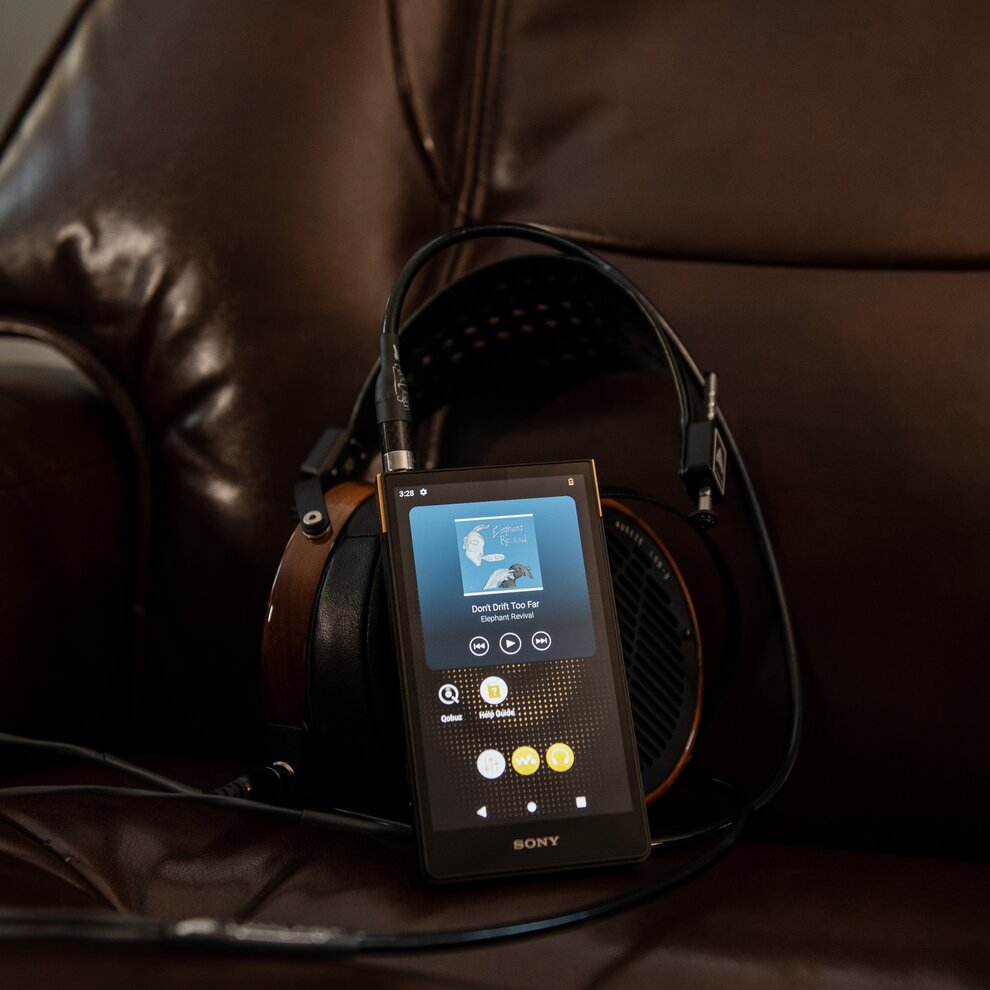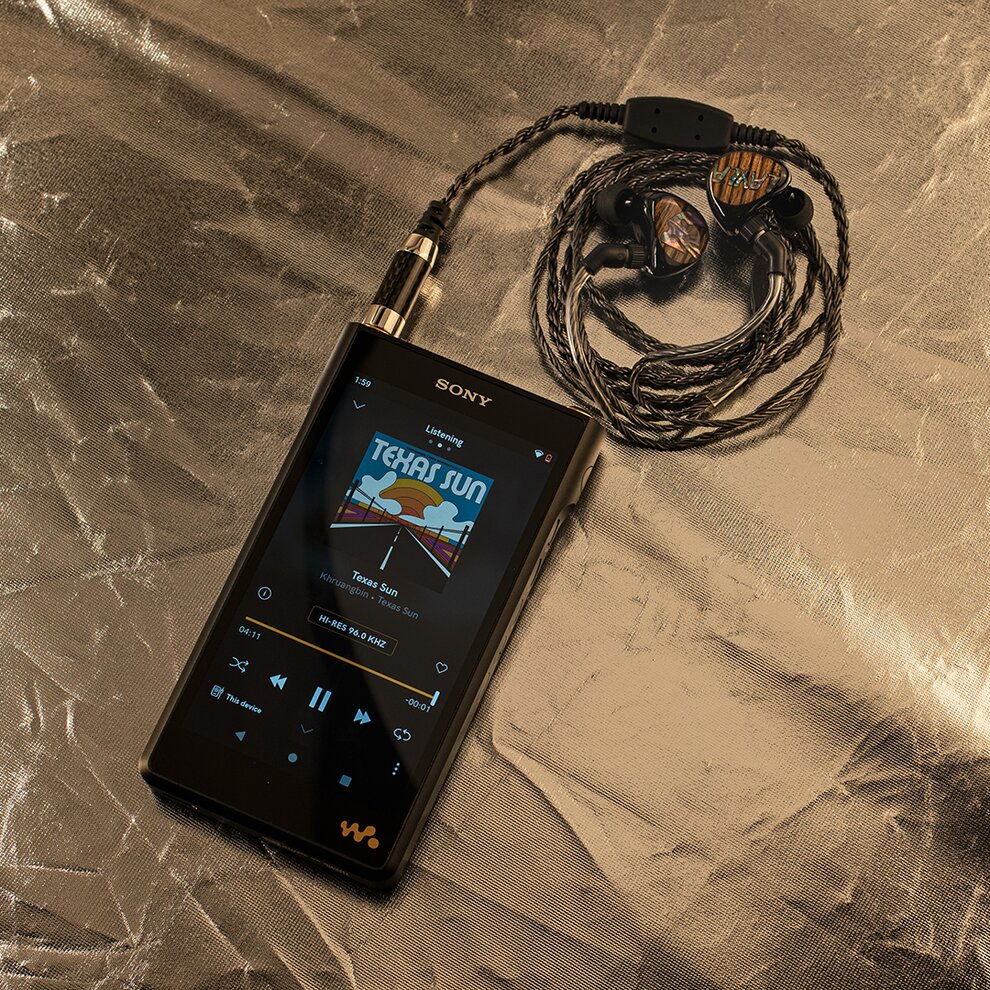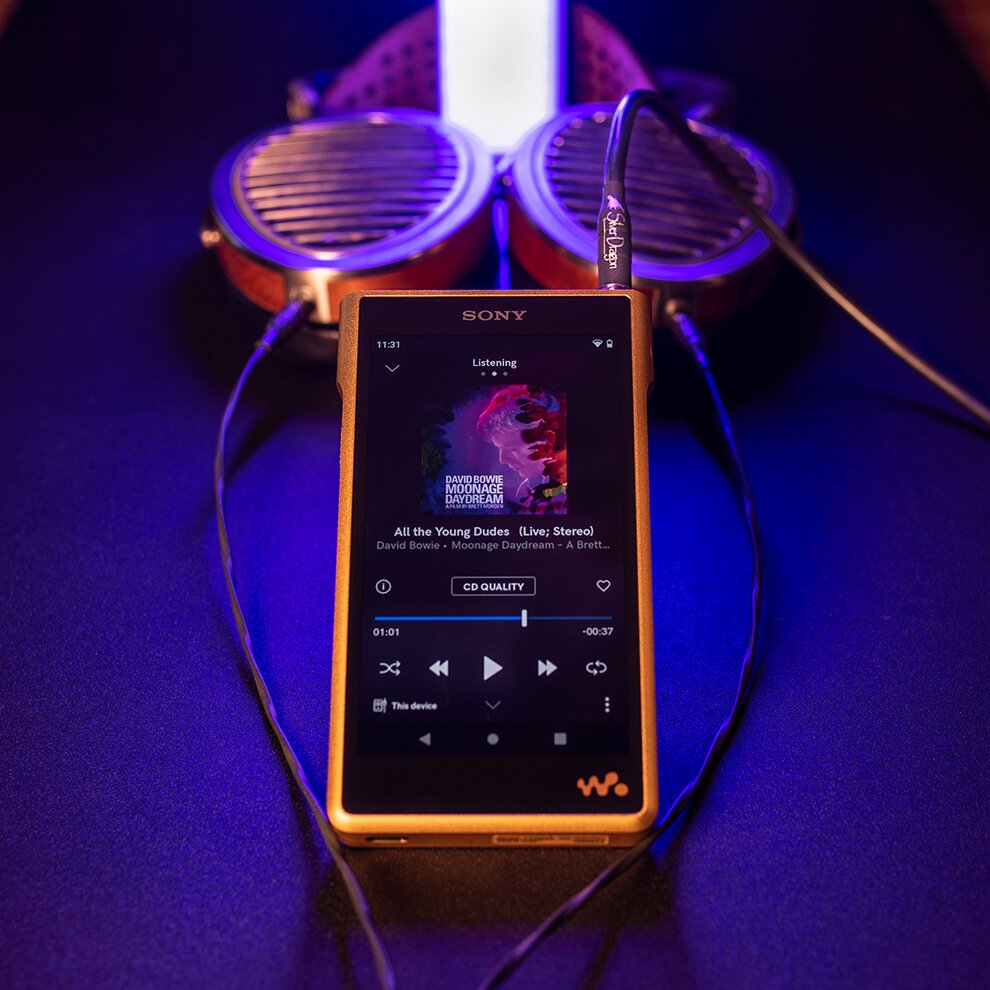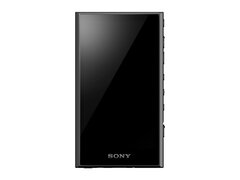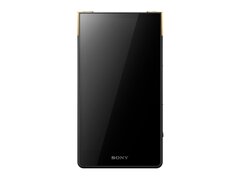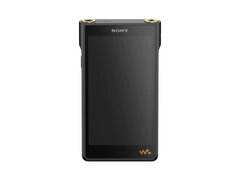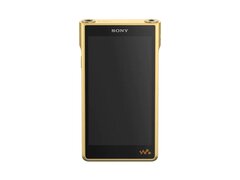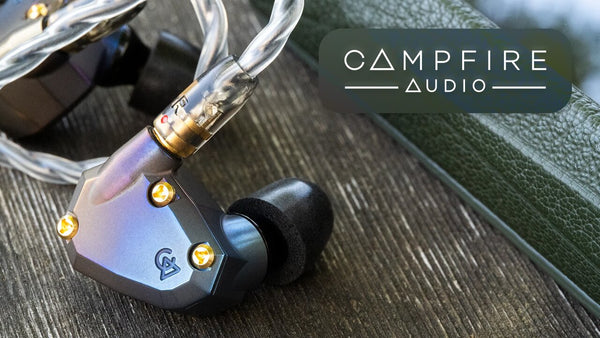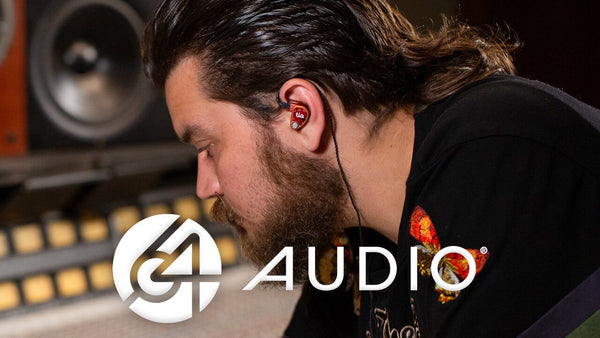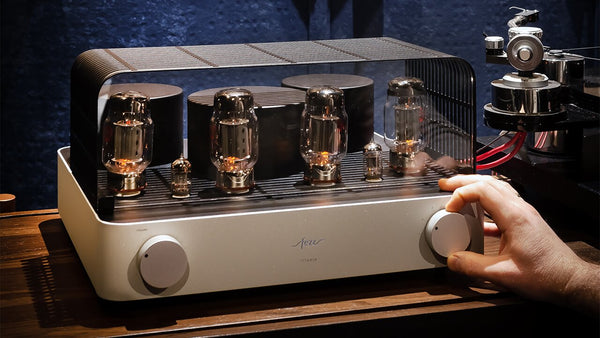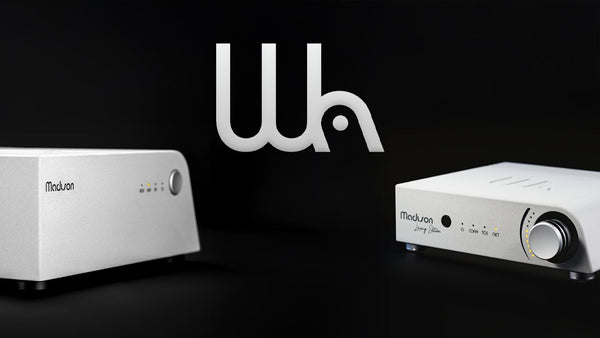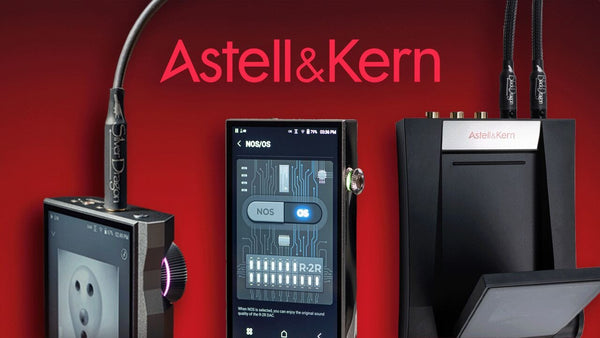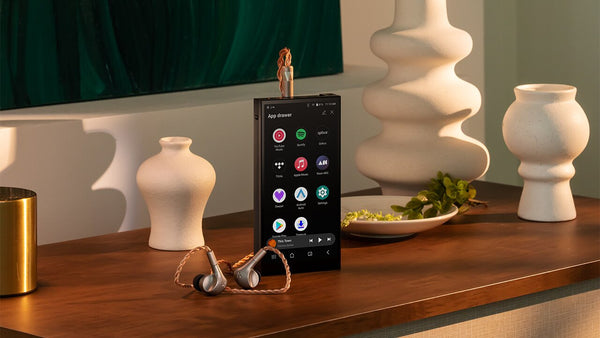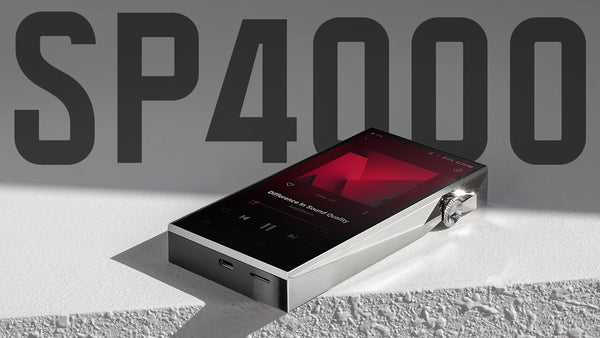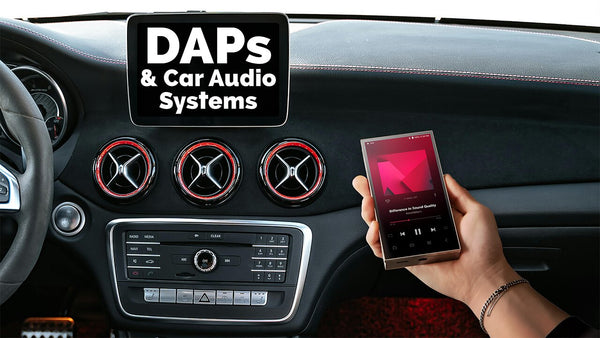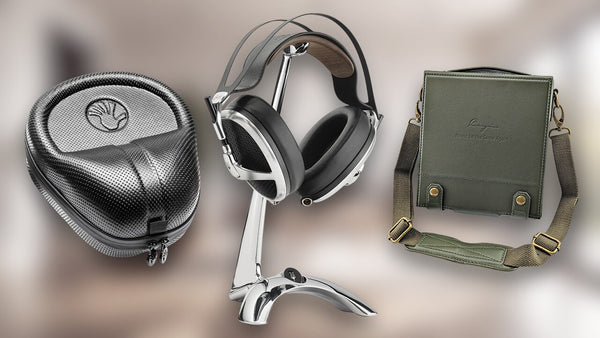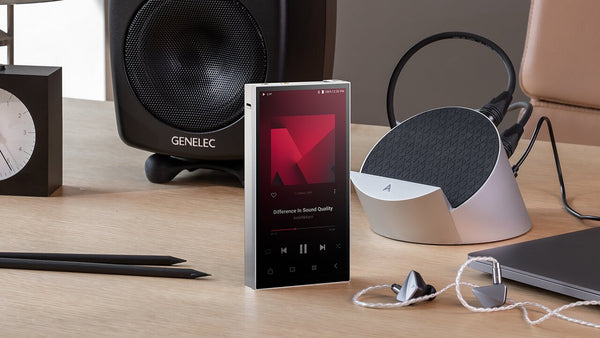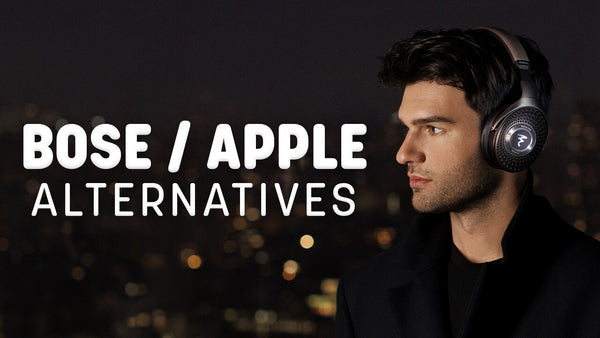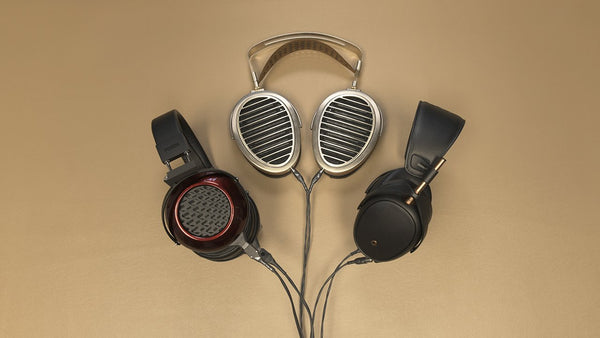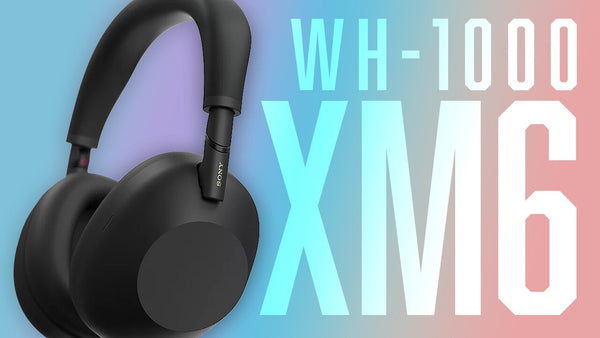The Evolution of the Sony Walkman

Ah, the Sony Walkman. You might think it's a relic from the annals of audio history... but you'd be wrong! The Walkman revolutionized the way we listen to music, and the audio innovations kept right on coming: The world's first CD player. The world's first portable CD player. The world's first in-ear headphones.
Today, the Sony Walkman has evolved far beyond its humble cassette tape origins. The modern Sony Walkman is a sleek, high-resolution audio player designed for discerning audiophiles and music enthusiasts who crave superior sound quality on the go. Equipped with advanced audio technologies like S-Master HX digital amplifiers, DSEE HX upscaling, and support for a wide range of high-resolution audio formats, these music players deliver an immersive and dynamic listening experience. With ample storage capacity, long battery life, and intuitive touchscreen interfaces, today’s Sony Walkman DAPs are the perfect companion for audiophiles who refuse to compromise on sound quality, even when traveling or commuting. Whether you’re listening to your favorite songs or discovering new artists, these portable music players reproduce every note with exceptional clarity and depth, allowing you to lose yourself in the music wherever your journey takes you.
Today's Sony Walkman Lineup

Today’s Sony Walkman DAPs look a little different than the original TPS-L2 “Walkman” Cassette Player. Touch screens, sleek gold chassis, and select models compact enough to fit in your back pocket. The TPS-L2 walked so today’s Walkmans could run! There are four modern-day Walkman models: The NW-A306, the NW-ZX707, the WM1AM2, and the top-of-the-line WM1ZM2. Each one has features and designs you could hardly imagine back in 1979. Things like AI-powered DSEE Ultimate upscaling and wireless capability. They all have two cool throwback features: A cassette tape user interface and a digital volume knob that looks like an analog knob. All of these models are supported by Android and compatible with Wi-Fi and Bluetooth, so you can stream music or access your own digital files.
These players show off the signature Sony 'V'-shaped sound: Warm, clear, rich and bold, but with increasing degrees of power and sound transparency as you go up the price ladder.
Sony NW-A306 Walkman DAP Music Player
Designed for music lovers who want to enjoy high-quality audio on the go without breaking the bank
- High-resolution audio support: Compatible with a variety of hi-res audio formats like FLAC, WAV, DSD
- S-Master HX Digital Amplifier: Amplifier technology helps to reduce distortion and noise while preserving the clarity and detail of the original audio signal
- DSEE Ultimate Upscaling: Sony's advanced upscaling technology enhances the quality of compressed audio files, making them sound closer to high-resolution audio
- Compact and Lightweight Design: 3.6-inch touchscreen display with a slim, lightweight body that easily fits in your pocket
- Bluetooth and Wi-Fi Connectivity for direct download and streaming
- 32GB of Internal Storage and up to 36 hours of playback
Headphone Recommendation: Sony WH-1000XM5 Wireless Noise-Canceling Headphones for the ultimate hi-fi portable setup
Priced at $349.99, the NW-A306 is Sony's entry-level Walkman model. With sleek black styling, a 3.6-inch touchscreen, and a weight of only four ounces, it's the smallest Walkman model, making it effortlessly portable. A tiny DAP (Digital Audio Player) that’s packed with features, it can literally fit in the palm of your hand. These days when portable devices need a separate bag to tote them around in, Sony’s size for the NW-A306 is a welcome one.
The NW-A306 supports a wide range of audio formats, including high-resolution options like FLAC, WAV, and DSD, ensuring that you can enjoy your music no matter the format. It incorporates advanced audio technologies like S-Master HX digital amplifier and DSEE Ultimate upsampling, which work together to minimize distortion, reduce noise, and breathe new life into compressed audio files.
Users can also connect the NW-A306 into their PC computer to access personal digital music collections. With 32GB of internal storage and micro SD card expansion, the NW-A30 Walkman makes it easy to manage and enjoy your extensive music library.
The Walkman's Bluetooth and Wi-Fi connectivity options provide flexibility for wireless listening and effortless music downloads. With a built-in rechargeable battery that boasts an impressive 36-hour battery life, users can listen enjoy all-day listening sessions. Given its lower power output, you'll get the best performance from the A306 with IEMs (In-Ear Monitors). Pair it with the Sony WF-1000XM5 Earbuds for the ultimate portable audio setup.
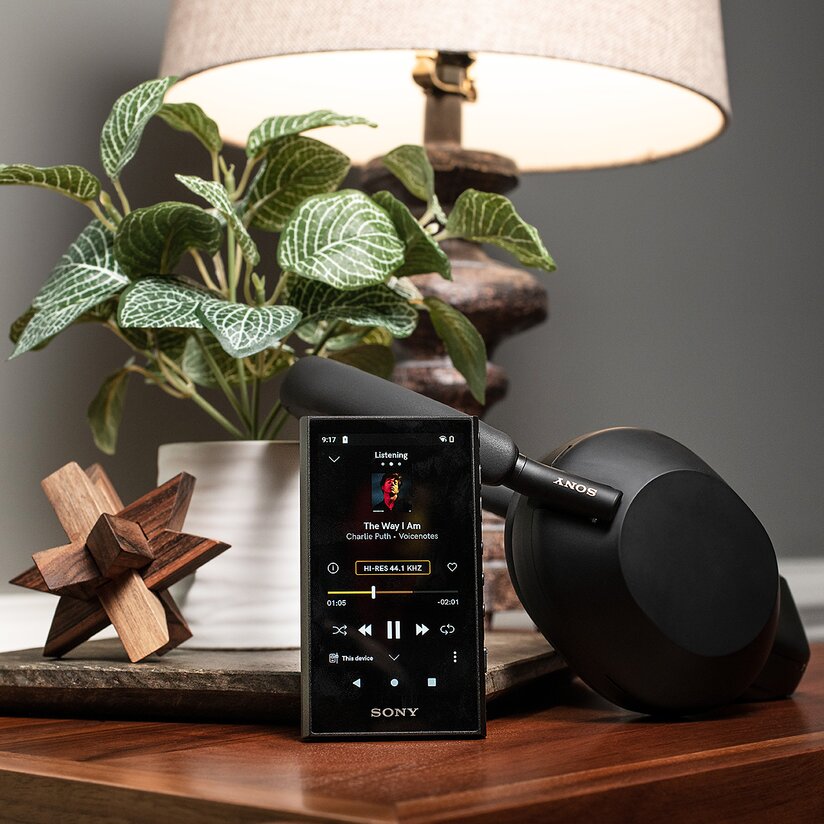
Featured: Sony NW-A306 Walkman DAP, Sony WH-1000XM5 Wireless Headphones
Sony NW-A306 Specifications
- Operating System: Android 12
- Dimensions: 2.23" W x 3.88" H x 0.47" D
- Weight: 3.99 oz
- Headphone Out: Stereo mini-jack, frequency response 20-40,000Hz
- Audio Playback: MP3, WMA, FLAC, WAV, AAC, Apple Lossless, AIFF, DSD, APE, MQA Supported
- Connectivity: USB Type-C, microSD, Bluetooth 5.0 (supported codecs: SBC, LDAC, aptX HD, AAC)
- Built-in Battery: Rechargeable Lithium-ion Battery
- Battery Life: Approx. 36 hours continuous playback. Varies depending on volume setting, conditions of use, and ambient temperature.
- USB DAC: Yes
Sony NW-ZX707 Walkman DAP Music Player
Sits below the flagship NW-WM1ZM2, offering exceptional performance at a more accessible price point
- Balanced and Unbalanced Headphone Outputs
- Larger Internal Storage: 64GB
- Larger Display screen: 5-inch HD Touchscreen
- High-quality Construction: Durable aluminum alloy frame and a premium leather back panel
- High-resolution audio support: Compatible with a variety of hi-res audio formats like FLAC, WAV, DSD
- S-Master HX Digital Amplifier: Amplifier technology helps to reduce distortion and noise while preserving the clarity and detail of the original audio signal
- DSEE Ultimate and Edge AI-Upscaling: Sony's advanced upscaling technologies enhance the quality of compressed audio files and optimize the performance of wired and wireless headphones
- Up to 25 hours of playback with high-resolution audio files and up to 47 hours with compressed formats
Headphone Recommendation: Astell&Kern AK ZERO1 IEMs for a fashionable pairing that delivers high-quality sound
The Sony NW-ZX707, which sells for $899.99, is a step up from the NW-A306. It's an excellent choice for someone who wants a high-performance, feature-rich DAP that strikes a balance between the ultra-premium NW-WM1ZM2 and the more affordable NW-A306. Packed with advanced features and premium components, this Walkman delivers an immersive listening experience that brings your music to life.
The NW-ZX707 is larger than the Sony NW-A306 DAP at 5 inches tall and weighing approximately 8 ounces. It's got the same sleek black styling but with copper accents and a generous 5-inch HD display. The durable aluminum alloy frame and luxurious leather back panel not only look and feel premium but also provide a solid foundation for the DAP's audio capabilities.
With support for a wide variety of high-resolution audio formats like DSD, FLAC, and WAV, every nuance and detail of your favorite tracks will be faithfully reproduced. The S-Master HX digital amplifier, coupled with DSEE Ultimate and Edge AI-upscaling technologies, minimizes distortion and noise while optimizing the performance of your wired and wireless headphones.
You get 64GB of internal memory, plus the option to add a micro SD card up to 1TB. The ZX707 will provide up to 25 hours of 44.1kHz FLAC playback. The ZX707 is a balanced design, with more complex circuitry than the NW-A306. This means you'll be able to drive a variety of lower-impedance headphones to peak performance. The NW-ZX707 has a warm, rich, and wonderfully clear sound that is especially good for Rock, Classical, Jazz, Blues, and vocals.
Sony NW-ZX707 Specifications
- Operating System: Android 12
- Dimensions: 2.86" W x 5.21" H x 0.67" D
- Weight: 8.01 oz
- Headphone Out: Stereo mini-jack, frequency response 20-40,000Hz; balanced standard jack, frequency response 20-40,000Hz
- Audio Playback: MP3, WMA, FLAC, WAV, AAC, Apple Lossless, AIFF, DSD, APE, MQA Supported
- Connectivity: USB Type-C, microSD, Bluetooth 5.0 (supported codecs: SBC, LDAC, aptX HD, AAC)
- Built-in Battery: Rechargeable Lithium-ion Battery
- Battery Life: Approx. 25 hours continuous playback with high-resolution audio files. Varies depending on volume setting, conditions of use, and ambient temperature.
- USB DAC: Yes
Sony NW-WM1AM2 Walkman DAP Music Player
Sits at the top of Sony's Walkman lineup alongside its gold-plated sibling the WM1ZM2
- Balanced and Unbalanced Outputs: 4.4mm balanced and 3.5mm unbalanced outputs
- High-quality audio components and circuitry
- Premium Build: High-rigidity aluminum alloy chassis that minimizes electrical interference and vibrations, ensuring a pure and stable sound
- Larger Internal Storage: 128GB
- S-Master HX Digital Amplifier: Amplifier technology delivers a clean, detailed sound with a wide soundstage and minimal distortion
- Fine Sound Resistor and KIMBER KABLE: Premium components further enhance the audio quality, ensuring a smooth, natural sound with excellent clarity and detail
- High-resolution audio support: Compatible with a variety of hi-res audio formats like FLAC, WAV, DSD, and MQA
- Bluetooth and Wi-Fi Connectivity for direct download and streaming
- Up to 18 hours of playback with high-resolution audio formats, 40 hours of playback with compressed audio formats
Headphone Recommendation: Empire Ears HERO Universal IEMs for a discrete portable companion
Moving up the Walkman latter is the NW-WM1AM2, which costs $1,399.99. You get a jump in power here, giving the WM1AM2 the ability to drive higher-impedance headphones — Something the previous two players can't do. Enjoy the subtlest nuances of studio-quality sound in higher than CD quality with high-resolution audio. This second-generation model has been updated with Android, Wi-Fi, a bigger screen, better battery life, and more. In just 4.5 hours you get a fully charged battery that can play up to 40 hours of non-stop FLAC high-resolution audio.
While it's not much heavier than the ZX707, the WM1AM2 is a larger player. Here you'll get 128GB of memory plus the micro SD card option and a 5-inch touchscreen display. That's pretty stellar.
Sony has incorporated several advanced technologies to ensure the WM1AM2 delivers a pure, detailed, and immersive listening experience. The WM1AM2 is equipped with a high-quality S-Master HX digital amplifier, which helps to reduce distortion and noise while maintaining a wide dynamic range. The player also has several sound enhancements allowing you to customize the sound to your liking. You can activate the new Vinyl Processor, adjust the EQ using the 10 Band Equalizer, or test out the Dynamic Normalizer, DC Phase Linearizer, and DSEE Ultimate.
The WM1AM2 has a warm sound signature that's not lush-sounding, nor is the bass bloated or overwhelming. It's got great energy, liveliness, and openness to the sound. Listeners can use the 4.4mm balanced or 3.5mm single-ended headphone jacks to connect various headphones and IEMs. The WM1AM2 is great for Rock 'n' Roll and other peppy, bassy music - but it is by no means limited. Sony makes some of the best DAPs when it comes to sound and build quality and the WM1AM2 is a premium player built for those who enjoy the signature Sony sound: Fun, musical, and bassy.
Sony NW-WM1AM2 Specifications
- Operating System: Android 11
- Dimensions: 3.17" W x 5.61" H x 0.82" D
- Weight: 10.5 oz
- Headphone Out: Stereo mini-jack, frequency response 20-40,000Hz; balanced standard jack, frequency response 20-40,000Hz
- Audio Playback: MP3, WMA, FLAC, WAV, AAC, Apple Lossless, AIFF, DSD, APE, MQA Supported
- Connectivity: USB Type-C, microSD, Bluetooth 5.0 (supported codecs: SBC, LDAC, aptX HD, AAC)
- Built-in Battery: Rechargeable Lithium-ion Battery
- Battery Life: Approx. 40 hours continuous playback. Varies depending on volume setting, conditions of use, and ambient temperature.
Sony NW-WM1ZM2 Walkman DAP Music Player
Designed for listeners who prioritize audio quality above all else and are willing to invest in a premium device to achieve the best possible playback
- Balanced and Unbalanced Outputs: 4.4mm balanced and 3.5mm unbalanced outputs
- Luxury gold-plated oxygen free copper chassis with a 5-inch touchscreen
- Largest Internal Storage: 256GB
- Top-tier audio components and circuitry
- Native DSD file support
- S-Master HX Digital Amplifier: Amplifier technology delivers a clean, detailed sound with a wide soundstage and minimal distortion
- Fine Sound Resistor and KIMBER KABLE: Premium components further enhance the audio quality, ensuring a smooth, natural sound with excellent clarity and detail
- Premium LDAC Wireless Codec with 3x the bitrate of standard Bluetooth technology
- Bluetooth and Wi-Fi Connectivity for direct download and streaming
- Up to 40 hours of continuous high-resolution playback
Headphone Recommendation: Focal Bathys Wireless Headphones for top-notch noise cancellation and a fun, dynamic sound to complement the WM1ZM2.
The top-of-the-line Sony WM1ZM2 Walkman DAP is the pinnacle of portable audio perfection. Priced at $3,699.99 this flagship digital audio player boasts a luxurious, gold-plated oxygen-free copper chassis that not only exudes elegance, but also minimizes electrical interference and the OFC purity has been bumped up to 99.99% over the original WM1Z. The copper lends the player its unique natural, acoustic sound and its conductivity and raw strength reinforce the Walkman with unrivaled audio performance. It's been called the Golden Brick, and yes, it does weigh a bit more at just over 17 ounces. We like to call it an Apple iPod on steroids!
With its generous 256GB storage capacity, the WM1ZM2 can accommodate an extensive collection of high-resolution audio files. Under the hood, the player is equipped with top-tier audio components and circuitry, including a fine sound resistor, a premium FT CAP3 capacitor, and Kimble Kable internal wiring— all working in harmony to create an immersive and emotive listening experience. Whether you're using balanced or unbalanced headphones, the Sony WM1ZM2 Walkman delivers an unparalleled level of audio fidelity that you just can't beat.
The WM1ZM2 has a fair amount of warmth with lots of emotion, nuance, and precision, but it is not laid-back sounding. The sound is expressive and lively— the kind of sound that makes you feel every bit of emotion the artist puts into a performance. Listeners can adjust the sound to their liking using the sound adjustments on the WM1ZM2: 10 Band Equalizer, DSEE Ultimate, DC Phase Linearizer, Dynamic Normalizer, and Vinyl Processor. The WM1ZM2 is the ultimate Sony Walkman for those willing to invest in pure audio bliss. With its unparalleled sound quality, extensive features, and premium build, the Sony WM1ZM2 Walkman is a true masterpiece of portable audio engineering.
Sony NW-WM1ZM2 Specifications
- Operating System: Android 11
- Dimensions: 3.17" W x 5.61" H x 0.82" D
- Weight: 17.3 oz
- Headphone Out: Stereo mini-jack, frequency response 20-40,000Hz; balanced standard jack, frequency response 20-40,000Hz
- Audio Playback: MP3, WMA, LDAC, FLAC, WAV, AAC, Apple Lossless, AIFF, DSD, APE, MQA Supported
- Connectivity: USB Type-C, microSD, Bluetooth 5.0 (supported codecs: SBC, LDAC, aptX HD, AAC)
- Built-in Battery: Rechargeable Lithium-ion Battery
- Battery Life: Approx. 40 hours continuous playback with high-resolution audio files. 18 hours playback with LDAC. Varies depending on volume setting, conditions of use, and ambient temperature.
Comparison of all four Sony Walkman Models
OS Operating System
Android 12
Android 12
Android 11
Android 11
Internal Storage
32GB
64GB
128GB
256GB
Battery Life
Up to 36 hours of high-resolution playback
Up to 25 hours of continuous high-resolution playback
Up to 40 hours of continuous high-resolution playback
Up to 40 hours of FLAC high-resolution playback
Charging Time
3.5 hours
3.5 hours
2.5 hours
4.5 hours
Dimensions & Weight
2.23" W x 3.88" H x 0.47" D
3.99 oz
2.86" W x 5.21" H x 0.67" D
8.01 oz
3.17" W x 5.61" H x 0.82" D
10.5 oz
3.17" W x 5.61" H x 0.82" D
17.3 oz
Touchscreen Size
3.6"
5"
6.5"
5"
Headphone Outputs
3.5mm mini-jack
4.4mm balanced
3.5mm mini-jack
4.4mm balanced
3.5mm single-ended
4.4mm balanced
3.5mm Unbalanced
Wi-Fi & Bluetooth?
Wi-Fi compatible
Bluetooth 5.0
Wi-Fi compatible
Bluetooth 5.0
Wi-Fi compatible
Bluetooth 5.0
Wi-Fi compatible
Bluetooth 5.0
Sony NW-A306
Sony NW-ZX707
Sony NW-WM1AM2
Sony NW-WM1ZM2
OS Operating System
Android 12
Android 12
Android 11
Android 11
Internal Storage
32GB
64GB
128GB
256GB
Battery Life
Up to 36 hours of high-resolution playback
Up to 25 hours of continuous high-resolution playback
Up to 40 hours of continuous high-resolution playback
Up to 40 hours of FLAC high-resolution playback
Charging Time
3.5 hours
3.5 hours
2.5 hours
4.5 hours
Dimensions & Weight
2.23" W x 3.88" H x 0.47" D
3.99 oz
2.86" W x 5.21" H x 0.67" D
8.01 oz
3.17" W x 5.61" H x 0.82" D
10.5 oz
3.17" W x 5.61" H x 0.82" D
17.3 oz
Touchscreen Size
3.6"
5"
6.5"
5"
Headphone Outputs
3.5mm mini-jack
4.4mm balanced
3.5mm mini-jack
4.4mm balanced
3.5mm single-ended
4.4mm balanced
3.5mm Unbalanced
Wi-Fi & Bluetooth?
Wi-Fi compatible
Bluetooth 5.0
Wi-Fi compatible
Bluetooth 5.0
Wi-Fi compatible
Bluetooth 5.0
Wi-Fi compatible
Bluetooth 5.0
FAQs
What is the maximum storage capacity of micro SD cards for my Walkman?
For micro SD cards, the Walkman players can support up to 128GB
Can I use my Walkman while charging it?
Yes, depending on the charging procedure. If you use an AC adapter you can use the Walkman while charging it. However, if you connect the Walkman to a PC via a USB cable, you can't use it while charging. If you use your Walkman while it's charging, the temperature of your Walkman can increase.
Can you play cassette tapes on a modern Sony Walkman?
No, the latest generation Sony Walkman Players do not have cassette tape tray to play physical tapes.
Can I play audio in high resolution format with the Walkman player?
Yes, the NW-A306, NW-ZX707, NW-WM1AM2, and NW-WM1ZM2 Walkman players support high resolution playback over a wireless connection with devices that support LDAC.
How do I transfer music to my Sony Walkman from my computer?
Follow these steps:
- Connect the computer and the Walkman using a USB-C cable. Start the Music Center for PC software. Under Transfer mode, select Auto-assign transfer
- When the Use USB For menu appears on the Walkman screen, select File Transfer- OK
- Transfer the content from the computer to the Walkman
- If transferring the content fails, the Walkman or SD card may lack space.
How do I perform an automatic firmware update for my Walkman?
Follow these steps:
- Connect the Walkman player to a computer
- On your computer, launch the Media Go application
- On the left panel of the Media Go screen, click WALKMAN
- On the update WALKMAN software screen, click install
- As the update notification window appears, click I agree to the above, then Update Now
How The Sony Walkman Changed Music (And Still Does)
Step back in time with the Sony Walkman. Are you ready to embark on a journey through time, tracing the evolution of one of the most iconic inventions in music history? Discover how the Walkman became a global sensation, transcending borders and languages to create a shared love for music. The Sony Walkman's legacy continues to influence modern audio technology and portable music players, shaping the way we enjoy our favorite songs today.
A Brief History of the Walkman

Sony traces its roots to the 1940s. The two men behind the venture, Masaru Ibuka and Akio Morita faced their share of trial and error within the electronics market until they struck gold with the transistor radio in 1952. In a matter of years, Sony's pocket-sized radios were market leaders. By the time the 1960's arrived, Sony had an incredible reputation as an electronics brand. The Sony Corporation of America set up shop in New York City with a store on Fifth Avenue that featured the Japanese flag, reminding customers of the company's roots.
Since then, the company has grown from a two-man venture into a multinational conglomerate. The company's headphones, earphones, and digital music players are renowned for their technology, quality construction, and robust, musical sound.
We go about our lives listening to our own private soundtracks like it's no big deal, but it hasn't always been that way. In fact, it became a very big deal when Sony introduced the first Walkman to the U.S. American market in 1980, a year after it was unveiled in Japan.
The story goes that Sony co-founder Masaru Ibuka wanted to "listen to music in stereo on an airplane while traveling abroad." A Sony engineer created a prototype personal listening device based on the Sony Pressman cassette recorder. Introduced in 1979, the Walkman (which was originally known as the Soundabout in the U.S. market) transformed the way we listen to music. This blue and silver box was called the TPS-L2, and it came with its own headphones. the TPS-L2 cost $150 (that's about $622 in today's dollars) — So, yeah, it wasn't inexpensive.
Sony ended production of the cassette player Walkman in 2010, but the Walkman brand is still very much alive and well. The Sony Walkman evolved over the years from a cassette, to CD, to MiniDisc, to MP3 player, to high-resolution streaming, but it's still a Walkman.
Today's Walkman models are hi-res streaming music players that let you download apps and enjoy a level of on-the-go sound quality that was only a dream back in 1980. Let's take a walk down Walkman memory lane.
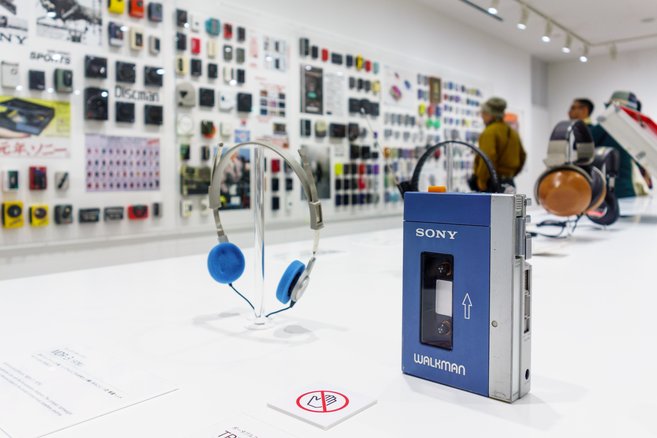
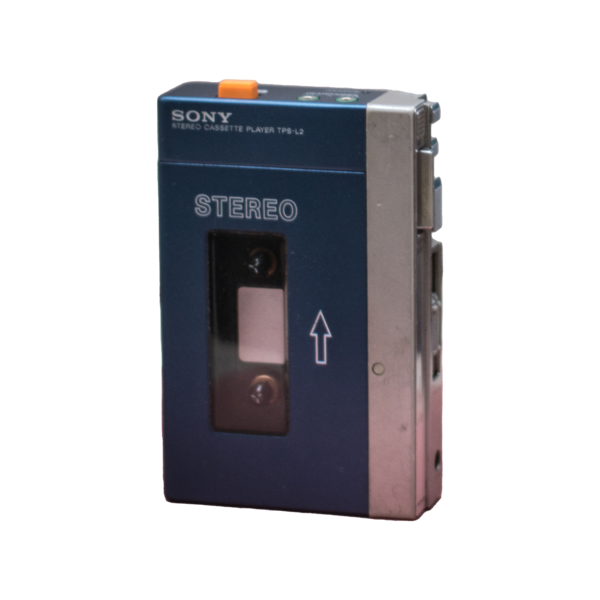
Sony TPS-L2 "Walkman" Cassette Player
The first model of the first-generation Walkman, the TPS-L2 Walkman featured two headphone jacks and something called a "hot line" button that you could use to mute music and turn on a built-in microphone. This allowed two people to share the Walkman and carry on a conversation without removing their headsets. Get this: Sony co-chairman Akio Morita was worried that it would be seen as rude for one person to be listening to music alone. Ah, how times have changed!
The TPS-L2 initially sold slowly but with skillful marketing, demand soon soared. With the TPS-L2 a whole new market had been created and within a couple of years, every major Japanese electronics manufacturer had begun to offer something similar.
Sony WM-2: Walkman II
The WM-2, or the "Walkman II," followed in 1981, with many other cassette player models to come (45 more, to be exact). Much lighter than the first generation, this new Walkman supported metal tape and featured an anti-rolling mechanism.
Do you remember the Sony Sports Walkman in bright yellow? That first came out in 1984. It was waterproof, so you could play your favorite mixtapes without worrying about splashes from the pool.
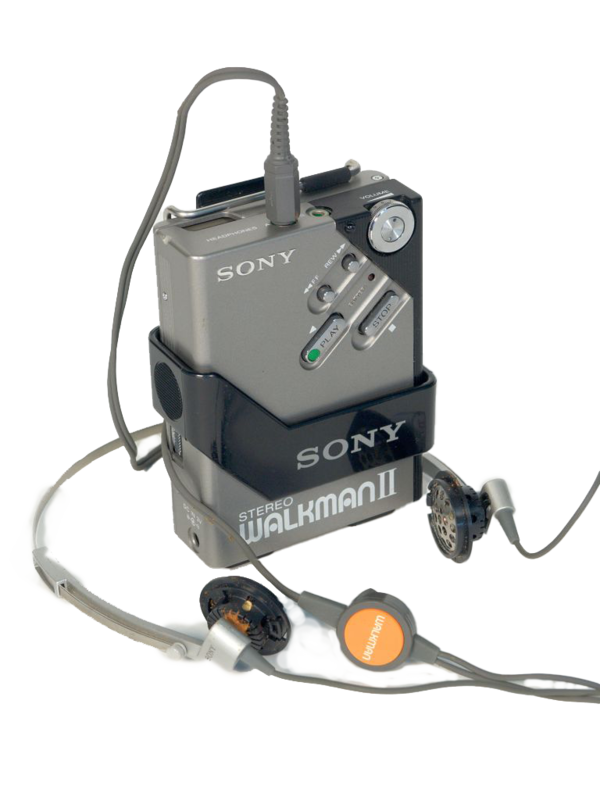

Sony D-50: Discman
The cassette tape was far from dead, but something new was on the horizon: A circular disc known as the CD. In fact, the compact disc was co-developed by Sony and Philips. And in 1984, Sony released the D-50, the world's first portable CD player. You may know it better as the Discman, which Sony rebranded it to in 1999. It was portable, but a bit clunky.
Sony TCD-D3
In 1990, Sony released the TCD-D3 Walkman, which used the digital audio tape format. It was similar to a compact cassette player, but smaller and digital instead of analog. The first ultracompact, lightweight DAT Walkman, the TCD-D3 was small enough to fit in one's palm. DAT could record at sampling rates equal to, as well as higher and lower than a CD. However, the DAT format was never widely adopted.
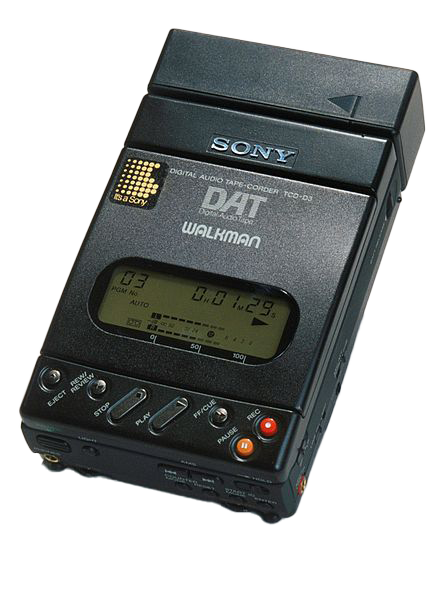
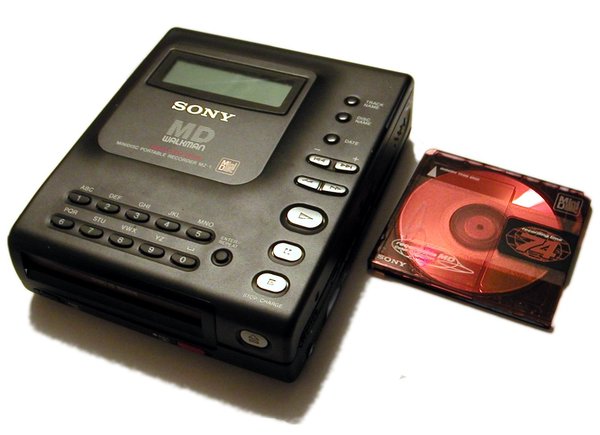
Pictured: Sony MZ-Z1
Sony MZ-1, MZ-2P MiniDisc
In the early 90's, Sony unveiled a new generation of personal audio using small discs: The MZ-1 and MZ-2P MiniDisc players. The first "MD" Walkman was resistant to vibrations when carried, and was designed to prevent discs from being damaged if you recorded while in motion.
The Sony MiniDisc is a small form of storage that is shaped like a tiny CD. These players could be used to record audio. Personal MiniDisc players write directly to the physical media instead of requiring you to use a computer to burn the data onto a CD. The MD's were never marketed as devices that could be used "whenever, wherever, and easy, like the Walkman."
Sony NW-MS7
Fast-forward to 1999, and digital file playback became a reality for the Sony Walkman with the NW-MS7. The super-lightweight player stored music from your computer on a tiny "MagicGate" memory stick. You could download songs from the internet, or rip tracks from your CDs, then transfer the music to the Memory Stick Walkman via your computer's USB port. The music, whether streamed or copied from a CD, was stored on your computer's hard disk using Sony's own "ATRAC3" audio compression technology.
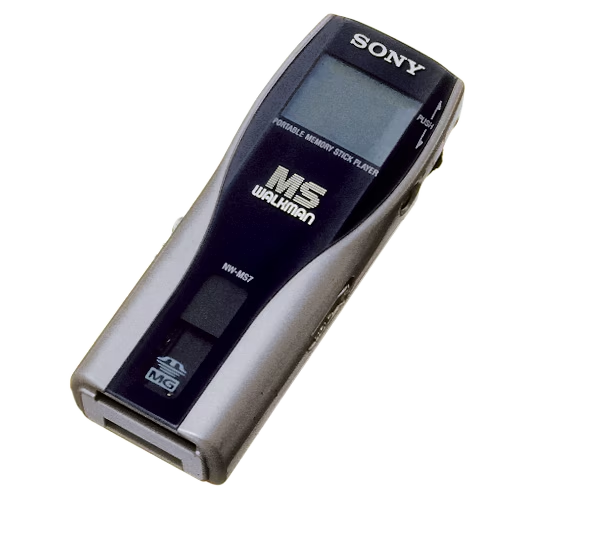
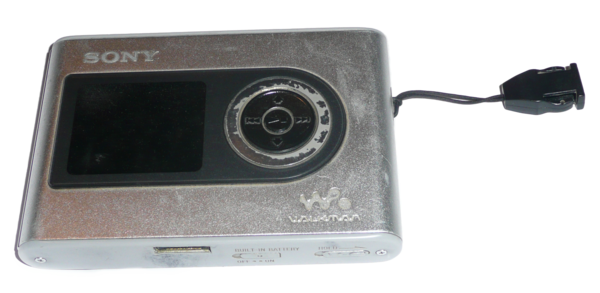
Pictured: Sony NW-HD3
Sony NW-HD1, NW-HD3
In 2004, Sony released its first network Walkman with 20-GB internal hard memory. This model was capable of approximately 30 hours of continuous playback, however it only played Sony's ATRAC3 format, not MP3.
It wasn't until the NW-HD3 in 2005 that Sony had a player that could play MP3 file formats natively. By this time, Sony was playing catch-up with the Apple iPod, which came out four years prior. The iPod wasn't the first MP3 player (that distinction goes to the Eiger Labs F10 in 1998), but it massively popularized the MP3 format.
21st Century Portable Audio
2009 was a turning point for Sony Walkman models. Sony unveiled its X-Series Walkman that delivered an unrivaled portable audio/video experience. The X-Series was the first Walkman to support Wi-Fi and it was also the industry's first video MP3 player to offer integrated digital noise-canceling technology.
The NW-Z1000 Series in 2011 was the first Walkman to run on Android, allowing users to enjoy music, video, and a variety of applications. In 2013, the NW-ZX1 was the first Walkman to support high-resolution audio.
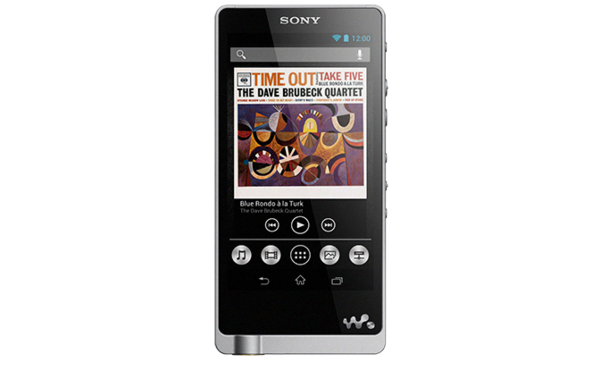
Pictured: Sony NW-ZX1
The Verdict
Sony's lineup of Walkman DAPs caters to a wide range of audiophiles and music enthusiasts with varying preferences and budgets. The NW-A306 DAP is an excellent choice for anyone seeking a portable, affordable player with a balanced sound signature. It's small enough to fit in your back pocket and it's a great entry-level option. The NW-ZX707 DAP offers a step up in terms of audio quality and build, delivering a more detailed and dynamic sound that will appeal to discerning listeners who appreciate a variety of genres. For the audiophile who demands the ultimate in sound quality, the NW-WM1AM2 and NW-WM1ZM2 DAPs are top-tier choices, with their exceptional clarity, spaciousness, and ability to drive high-end headphones with ease. Both of these premium DAPs are perfect for critical listening sessions at home or on the go! Pair any of these Walkman DAPs with your favorite headphones, like the Sony WH-1000XM5 Wireless Headphones with our Bronze Dragon Portable Headphone Cable, and you've got the ultimate portable setup. Whether you're a casual listener, a budding audiophile, or a seasoned veteran, Sony's Walkman DAP series has a model that will satisfy your needs and help you rediscover your favorite music in a whole new light.
What's next for the Sony Walkman series? We're not too sure, but one thing's for certain — The Walkman isn't going anywhere and we can expect Sony to continue to WOW us with its next Walkman release.

